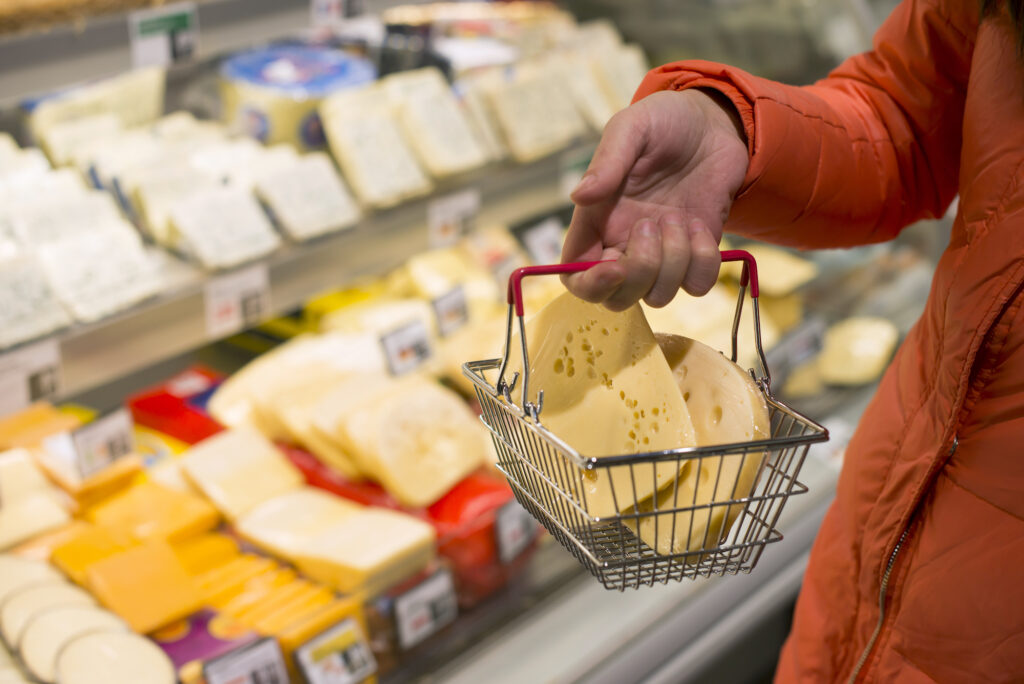Blog, Shopping Baskets, Shopping Carts, Specialty Carts
Shopping Small: Do Retail Customers Prefer Carts or Baskets?
The term “shopping small” has three major meanings: it might refer to purchasing physically smaller items; spending less money during a shopping trip (i.e. a smaller bill); or supporting local small businesses. Regardless of how this phrase is used, though, the customer is always at the center. Put another way, in order for retail businesses of any size to succeed, they must provide their customers with the optimal experience from beginning to end. And the availability and variety of shopping vessels (i.e. carts and baskets) is a major contributing factor in this regard.
Generally speaking, do customers prefer shopping carts or baskets? And does this sentiment change in the context of shopping small? While there isn’t much concrete data on this subject, retail and grocery business owners should at least consider these questions, as doing so will help them better accommodate their shoppers. So, let’s break down the pluses and minuses of both carts and baskets, and how to go about scaling your shopping vessels for the small shopper.
The Differences Between Shopping Baskets & Carts
The Pros and Cons of Carts
Shopping carts yield many benefits for shoppers and store owners alike. On the customer side, a sturdy cart makes the shopping experience less of a burden by eliminating the need to carry the weight of several items. Additionally, those with limited mobility can use a cart as a supporting device as they navigate the store. Businesses benefit by offering carts to their customers, too, mainly because shopping carts allow and encourage shoppers to gather more items on their journey.
Of course, carts come with their drawbacks, too. For one thing, they may require a significant deal of maintenance, especially if they’re cheaply made and used frequently. Even a single malfunctioning wheel can render a cart hazardous or useless until it’s fixed. Beyond these concerns, carts can clog up a store’s traffic, especially if they’re too big and space is limited. Also, when carts become too full they can be difficult to maneuver, resulting in collisions with shelves, products, other shoppers, etc.
The Downsides and Benefits of Baskets
What about baskets, then? Like carts, shopping baskets come in handy for various shopping situations. In particular, smaller shopping trips are often best accompanied by a basket because the weight will be minimal and baskets take up much less space than carts. Baskets also tend to be more durable than carts because they don’t feature as many components. Stores can also typically offer a greater number of baskets to their customers because they’re small and easily stacked to save space.
Baskets aren’t always preferable, though. Their limited capacity and need to be carried can decrease a store’s revenue, as customers become stricter on what they place inside. Offering larger shopping baskets can mitigate this dilemma a bit, but larger baskets can become cumbersome in their own right, simply by virtue of their size.
Scaling Your Shopping Vessels
So, both carts and baskets may be more or less preferable based on the particular customer and their shopping needs. Retailers must understand these nuances to deliver the best experience for all their shoppers. In other words, they should properly scale their carts and baskets to their operations and customers’ needs. In the realm of shopping small, providing small carts and baskets may be part of this solution.
At first glance, small shopping carts might seem counterintuitive. After all, one of the reasons carts are so useful is that they allow customers to make larger purchases. But if your store isn’t all that big and/or it offers several smaller products, standard or large carts might not make the most sense for your customers. Smaller carts give your shoppers the benefits of maneuverability without obstructing aisles or creating storage issues.
If you run a small, local business and/or sell a variety of smaller goods, you might also consider offering small shopping baskets to your customers. The exact size of these baskets might vary depending on your store’s particular needs. For instance, a small convenience store that sells over-the-counter medications, snacks, batteries, etc., might offer mini baskets (i.e. 5” tall, 8” wide).
Carts or Baskets: Why Not Both?
If you can’t easily determine whether your customers prefer carts or baskets, it’s always a good idea to offer both options, as long as you have enough for your shoppers without overfilling your store, always keeping optimal scale in mind. That said, this isn’t your only option. You might also consider investing in cart-basket hybrids, such as basket carts (carts that feature two-tiered empty spaces for baskets to be placed in) or rolling shopping baskets (baskets that feature wheels and a retractable handle). These unique and innovative vessels will give your customers even more freedom when navigating your store, boosting your reputation and sales. For instance, a customer who isn’t sure what they’re going to purchase might grab a roller basket so they can carry their goods part of the way and then roll the vessel if they decide to add more items to it.
There is no one way to “shop small,” and your store should be prepared to accommodate the various ways shoppers conduct their business. Carts, baskets, and hybrids all have their advantages, so think about how they can benefit your customers and your bottom line.
Good L Corporation delivers innovative shopping cart and basket solutions for retailers on a global scale. From a fleet of new custom carts to launch your store opening, to replacement baskets that supplement your existing shop supply, Good L Corp can configure the right carryall strategy to boost your retail business. Let’s get started! Contact us today for a no-pressure sales quote.


Request a Quote
Get a boost to your impulse sales which ultimately leads to an overall improvement of your total sales. Don’t you want to increase sales? Of course you do!